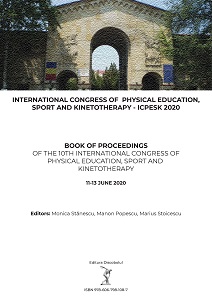ASSESSMENT OF THE PHYSICAL EDUCATION ACTIVITY CONCERNING THE OPTIMISATION OF INTERPERSONAL BEHAVIOUR
ASSESSMENT OF THE PHYSICAL EDUCATION ACTIVITY CONCERNING THE OPTIMISATION OF INTERPERSONAL BEHAVIOUR
Author(s): Gabriel TUDORACHE, Liliana Mihăilescu
Subject(s): Social Sciences, Psychology, Sociology, Social psychology and group interaction, Sports Studies
Published by: Discobolul Publishing House
Keywords: sociometry; assessment; physical education; interpersonal relationships; group cohesion;
Summary/Abstract: The paper assesses the abilities of second-grade students for physical education activities, with the aim of developing their psychological and social attitudes that are necessary for their integration into the community. The design of the educational activity for the second grade, which is achieved through the means of dynamic games, aims at developing and educating psychomotor skills but also optimising the psychological and social attitudes needed to build the social behaviour of students. Participants in the research are 81 students aged 8 to 9 years. The sociometric method was used to assess the dynamic of the sociability level and the intensity of existing relationships between students in the physical education lesson in order to track the formation of their prosocial behaviour during the basic acquisition cycle. In this respect, two sociometric types of tests were designed (according to the model of Zlate, 1982), which were applied differently: a written assessment – a sociometric questionnaire; a written paper – the practice of the sociometric questionnaire, as well as a practical test – the dynamic game. After analysing and comparing the final data with the initial ones through the two tests following the didactic strategy, we can conclude that the interpersonal relationships between students have reached a level of social maturity in school, while the level of group cohesion is reflected in the unity of the group rather than the person.
- Page Range: 173-186
- Page Count: 14
- Publication Year: 2020
- Language: English
- Content File-PDF

